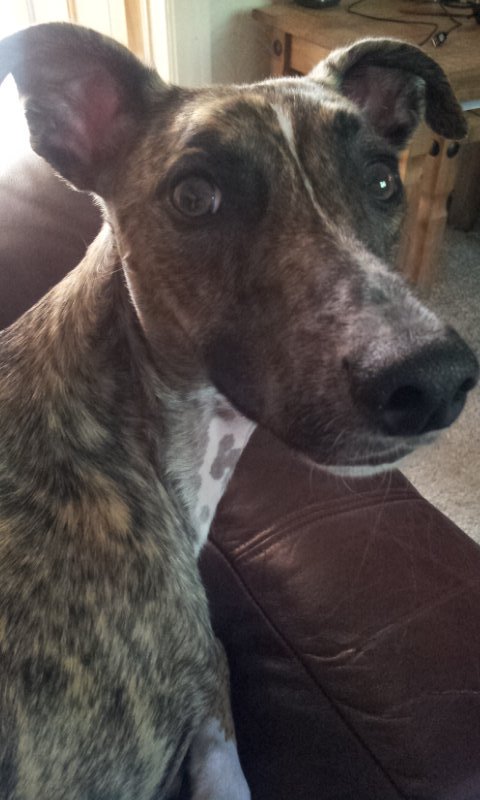
Deaf Dogs
As I am not deaf I have enlisted help from a great furpal of mine Deafie, who is a dog that is deaf.
Deaf dogs are aggressive and cannot be trained or re-homed
Humans are reluctant to re-home a Deaf dog as they think they will take longer to train and can't communicate with them. Deaf dogs learn sign language and most hearing dogs also respond to the visual commands given by humans, so why are humans so worried about Deaf dogs ? Deaf dogs learn to focus on the humans for commands and reassurance so it's more that Deaf dogs are easier to train so humans should give them a chance.
Deaf dogs bark funny.
True. OMD! is this true! That's because their deafness affects their ability to adjust the way in which they bark, deaf dogs tend to have a funny sounding bark. If a deaf dog does have any residual hearing, it tends to be isolated to higher pitched sounds. Taken together, deaf dogs do tend to have a unique bark! Spend some time with several deaf dogs and you’ll quickly learn their unique sound.
All deaf dogs are easily startled
Deaf dogs, depending on his or her individual personality and their personal life experiences may be more prone to startling when touched. The circumstances of being touched also plays a big factor into any startling behaviour. That said, any dog- hearing, deaf or blind- can be startled so the human must be respectful to the dog and when being introduced to them.
Deaf dogs must live with another hearing dog OR deaf dogs can’t live with other dogs
This kind of absolute statement is sometimes seen on re-homing adverts for Deaf dogs can be unfair as each dog irrespective of any hearing , visual or no impairment may need company or not, this should be assessed by the humans for the Deaf dog. That's why fostering is so essential, as it allows a dog to experience family life . Deaf dogs as a generic group are not more or less likely to need to live with or without other dogs. In fact, relying on a hearing dog can mean missing out on vital check-in training for the Deaf dog. The focus should be on building a great relationship with the deaf dog, rather than relying on another dog to mediate this. Deaf dogs can also go on to provide support and guidance for other dogs in the future and be foster dogs to others that have been left in pounds or kennels.
All deaf dogs are white
Deafness in dogs occurs for various reasons including hereditary, acquired, conductive, sensorineural, late onset, but hereditary deafness is most commonly linked to the genes which influence pigmentation of the coat and eyes. If the inner ear is unpigmented then development can be interrupted resulting in deafness. White, merle and piebald coated dogs are most prone to this, and since the same genes influence eye colour, many have blue eyes. Non-white dogs can also be prone to deafness due to hair cell loss such as Dobermans. Unfortunately realising a dog is Deaf is not always apparent to humans at the beginning as all puppies are born Deaf and usually react to light or movement. During this time (around the first 14 days) a dog can develop these senses which may hide the fact that they are Deaf as they appear to act the same as the rest of the puppies in the litter.
All Deaf dogs are more aggressive
This is false. Can you imagine what it's like to have someone just tap you on the side when you are fast asleep? it would make anyone grumpy. Humans need to be aware that when approaching a sleeping Deaf dog that they make sure they wake them gently by either using vibrations (stamping on the floor, slightly away from the dog), turning the light in and off or gently waving your hand close to them (not to close though) so they can use their smell sense.
A sleeping Deaf dog is no different to a sleeping hearing dog , care must always be given if you approach them. Deaf dogs like Deaf humans use their other senses to help them in the world. If the Deaf dog is startled it can, like any dog, respond in a negative way. Humans need to let the Deaf dog know they are there.
Deaf dogs are cannot socialise with Hearing dogs and they cannot pick up on the sound part of communication.
Dogs use body language for their social queues. Deaf dogs play and meet other dogs just the same by sniffing to say hello a. deaf dog can also go off lead to play. This is dependent on the dogs having good recall skills. Deaf dogs can't hear the barking and may bark different to the other dogs.
A human has to learn sign language to have a Deaf dog.
There isn't a universal doggy sign language but there are common signs and as with all things, when a dog and human bond they develop their own signs and words between them. When you realise that a puppy or even a rescue, is Deaf then the first thing to do is to get the human and dog to learn "checking in" training. Get the human to have loads of treats in their pocket and decide how often the "checking in" happens. If they are out for a walk then every 20 steps, the human stops and waits for the dog to look at them, the human can smile and give a sign and a treat. Once the dog and human learn to keep "checking in" with each other that is when better communication and training can start. Another thing to know is that even though a dog is Deaf, it helps if the humans still talks to the dog as if it is hearing because the Deaf dog uses facial expressions within their communication.
Deaf dogs are no good for doggy sports or work
Deaf dogs do well at agility training and even canicross too. Deaf dogs also make amazing PAT dogs also.
Dogs that are not born Deaf cannot cope.
Older dogs that become deaf due to age or illness can be helped in the same way, although it may take longer as they have to adjust to losing their hearing.




